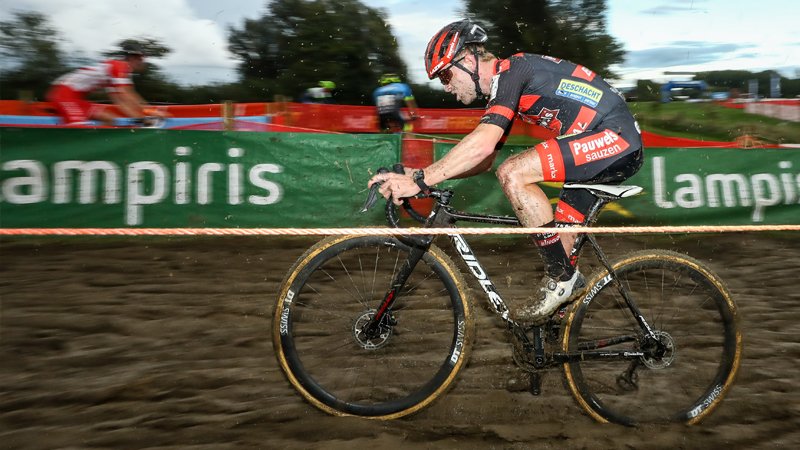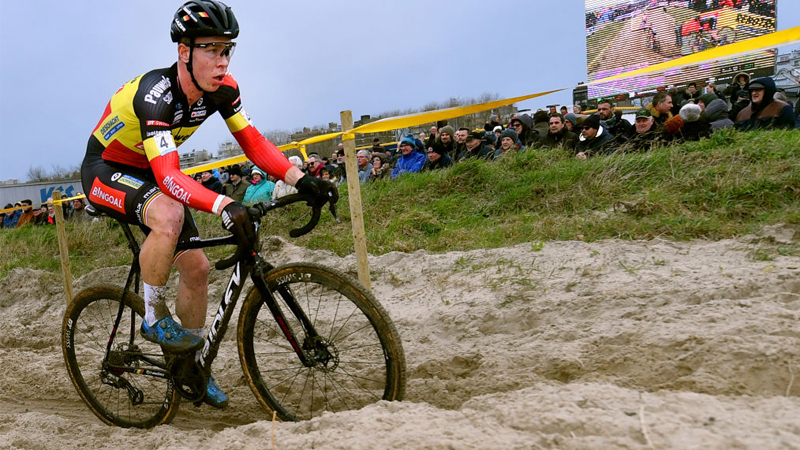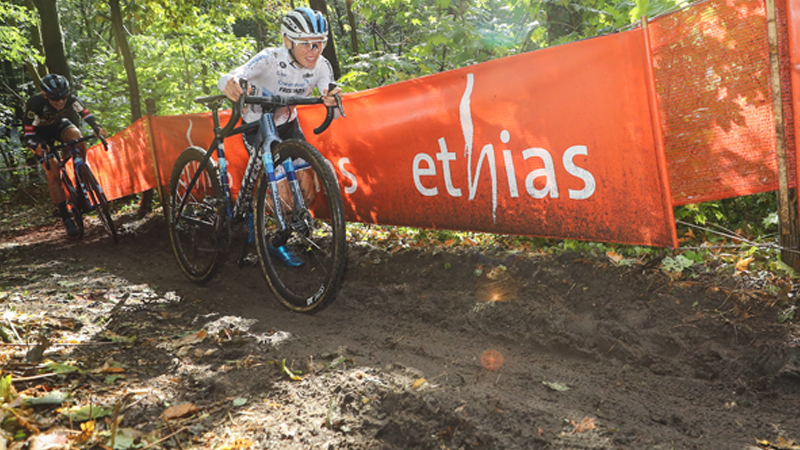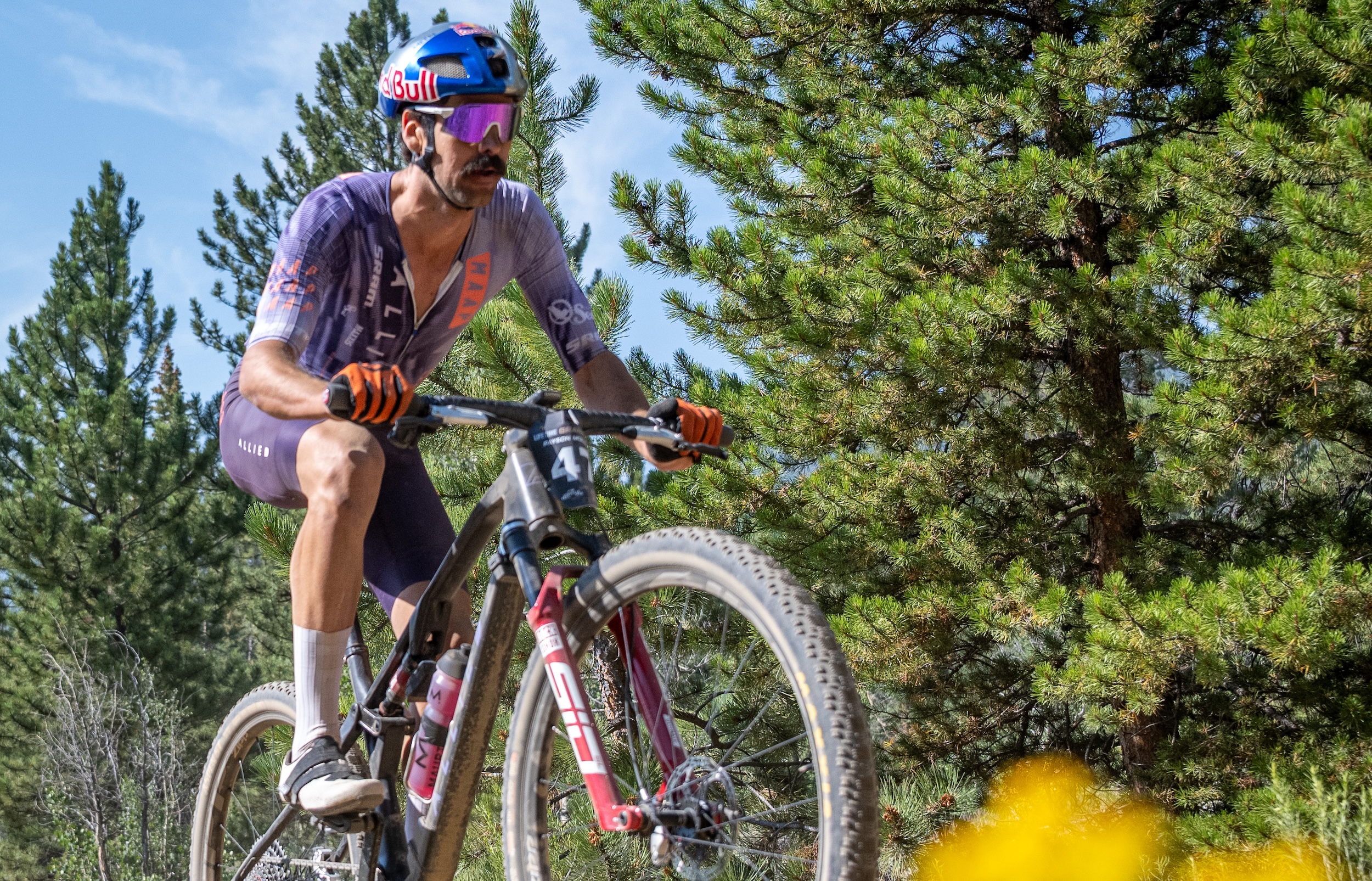What is cyclo-cross?
We explain the intricacies of the typically autumn- and winter-based lap racing phenomenon called cyclo-cross

Cyclo-cross is a unique cycling discipline with varying terrain and obstacles packed onto a short, twisting, often-muddy course, where riders sprint full gas from start to finish in a fast and furious action-packed hour of racing. It's an off-road, drop-bar bike discipline that is extremely popular at the grass-roots level for its inclusivity and relative safety.
The best cyclo-cross bikes share a similar silhouette to road bikes with their dropped handlebars and 700c wheels, but they are designed with clearance for wider cyclo-cross tyres and the mud they can collect. They regularly have steep angles for maximum manoeuvrability and minimum weight for fast acceleration.
Cyclo-cross long preceded gravel as a discipline, but since gravel came onto the scene, many comparisons are drawn between the two. It's true, many gravel and cyclo-cross bikes can perform dutifully at the other's discipline, but subtle differences optimise each to their own. Our cyclo-cross vs gravel guide explains all.

Cyclo-cross courses
You can trust Cyclingnews
Cyclo-cross courses have a little bit of everything, from pavement to dirt, tight corners and off-cambers, to steep hills and even sand pits. Courses are typically 2.5-3.5km (1.5-2 miles) long with lots of turns and myriad obstacles.
No two cyclo-cross courses are the same, but there are a number of common obstacles that feature across the discipline. Barriers are the most well-known cyclo-cross obstacle – consisting of two planks set 4-6m (13-20ft) apart, these barriers cover the width of the course and force riders to either dismount or, for the brave and skilled, hop over them. Barrier-hopping is an incredibly impressive skill honed by most professional cyclo-cross riders, and I really recommend you look up a highlight reel to see for yourself.
However, 99 per cent of cyclo-cross riders don’t possess the superhuman-level of skill needed to hop a barrier, so we get off and run instead. Running is a staple of cyclocross – love it or hate it, you’re going to have to run at some point. On the muddiest and most challenging of cyclocross courses, you may be running (or walking) for minutes at a time. On more forgiving courses, you may only have to hop off your bike once per lap to run over the barriers.
A cyclo-cross-style dismount is another discipline-specific skill that goes something like this: the rider unclips one foot as they approach the barriers. Rider then slows down for the barriers (if necessary), unclips their second foot and starts running, lifts their bike up and over the barriers mid-stride, repeats for the second barrier, and then, while running, jumps back onto the bike, clips in, and takes off. Speaking from personal experience, it takes quite a bit of practice (and embarrassing tumbles) to get good at the cyclo-cross-style dismount and remount.
Other obstacles and features of cyclo-cross courses include, but are not limited to: stairs, ledges, pump tracks, flyovers, and sandpits. Some of the most famous courses in cyclocross feature long sandpit sections – uphill, downhill, and off-camber sandpits offer some of the most spectacular and crash-tastic racing in cyclo-cross. It is difficult to describe riding through a sandpit, but here’s my attempt: your bike is 20kg (44lbs.) heavier and your front wheel suddenly has a mind of its own. You can’t steer; and if you do, your front wheel will hit a wall of sand and you will stop or crash. Remember to pedal hard through the sand, because you need a lot more force to keep moving on sand than on any other surface. It's best to attack it hard and fast but in a controlled straight line.
Race structure
Before each race, riders are called up into the pen, or call-up zone, where they line up shoulder-to-shoulder eight lanes wide. The pen is usually on a paved section of road just before the finish line. After a short countdown, riders stare nervously at a set of lights, waiting for the red lights to go out as if they’re lined up at Silverstone or Monaco.
When the lights go out, riders sprint full gas down the start/finish straight. The start is absolutely critical in cyclo-cross because the narrow and twisting course will quickly cause major gaps between the riders from first to last. Riders zig and zag throughout the course, quickly forming a very long line of suffering cyclists.
Cyclo-cross races are short and action-packed, with beginner-level races starting at 20 minutes in duration, and professional-level races being 60 minutes or more. That means that riders go full gas from the start, and after the start, and in the middle of the race…all the way to the finish. There really is no let-up. Every rider is sort of riding a punchy, off-road time trial with other riders in their way. Average speeds are typically under 20-25kph (12-15mph), so apart from a long and exposed start/finish straight, there is usually very little benefit to be had from the draft.
After the first lap or two, officials will calculate the race’s average lap time, and begin counting down laps from there: 3 to go…2 to go…1 to go. Because course layouts and conditions vary so much, lap times can be as short as six minutes and sometimes over ten minutes.
It seems the cyclo-cross season is ever-extending, but the meat of the season comes between September and December, with the UCI Cyclo-cross World Championships coming in January. And that brings us to weather.

Weather and course conditions
There is no rain delay in cyclo-cross. The UCI rulebook actually states that, “the course shall be usable in all circumstances, whatever the weather conditions.” (Part V Cyclo-cross 5.1.013). So whether it be rain, ice, sleet, or snow, cyclocross will go on.
One of the most intriguing aspects of cyclo-cross is the fact that the course is always changing. Rain and snow can severely alter the course, with what was once grass and dirt quickly becoming a giant puddle of mud. Suddenly, ascents become run-ups, descents become slip-n-slides, and ‘race lines’ no longer exist. If the precipitation lets up and the course begins to dry, another element comes into play: ruts.
Ruts form in the wet ground when rider after rider chooses the same line through a muddy corner, and the best ‘line’ begins to (literally) sink into the ground. As the mud dries, a rut is formed. Ruts are great because they take the guesswork out of cornering and line choice – you just put your front wheel in the rut and go. But ruts can also be dangerous for the same exact reason. Once your wheel is in a rut, you’re committed. And if you lose your balance while still in the rut, you will quickly go toppling over.
Cyclo-cross equipment
Somewhere between a road bike and a mountain bike came the birth of the cyclo-cross bike. A cyclo-cross bike’s frame and handlebars look a lot like a road bike’s – light, sleek, and agile, cyclo-cross bikes rip through the mud and rail corners from tape to tape. The tyres, on the other hand, may look a lot more like a mountain bike’s with greater width, thick knobs, and plenty of clearance to prevent the frame from clogging up with mud. Since every cyclo-cross course is different, tyre choice and tyre pressure are huge factors when it comes to achieving peak performance.
Some courses are so flat and fast that you can get away with a pair of semi-slicks, while harder courses filled with mud and off-camber sections require a beefier tyre at the maximum width (per the UCI) of 33mm. However, grass-roots races will generally permit wider tyres, and many will even permit a mountain bike.
Don’t pump up your tyres to the pressure you would use on the road – most recommend that cyclo-cross riders experiment with pressures of 25 to 35 psi, again, depending on the course conditions. Lightweight pros with years of experience and equipment testing sometimes go down to 12 or 13 psi on extremely challenging courses.
One final aspect of cyclo-cross that separates it from other disciplines is its inclusion of pits. Every lap, riders will pass one or two pit areas where they have to option to enter and switch to their other bike – most elite and pro-level cyclo-cross riders will bring two bikes on race day: an A bike and a B bike. Riders will enter the pit if they have a mechanical issue, such as a flat tyre or broken derailleur, or if they need a clean frame to jump onto during a muddy race. A cyclo-cross pit stop is even faster than Formula 1 – the rider tosses their bike to a bike-catcher, grabs their other bike mid-stride, jumps on, clips in, and never stops moving.
All in all, cyclo-cross is a unique discipline punctuated by challenging courses and ever-changing conditions. Its short duration and closed-circuit format make it extremely spectator-friendly and one of the most popular sports in Europe and a major platform for future cycling superstars.
The latest race content, interviews, features, reviews and expert buying guides, direct to your inbox!
Zach is a freelance writer, the head of ZNehr Coaching, and an elite-level rider in road, track, and e-racing. He writes about everything cycling-related, from buyer's guides to product reviews and feature articles to power analyses. After earning a Bachelor’s Degree in Exercise Science at Marian University-Indianapolis, Zach discovered a passion for writing that soon turned into a full-fledged career. In between articles, Zach spends his time working with endurance athletes of all abilities and ages at ZNehr Coaching. After entering the sport at age 17, Zach went on to have a wonderful road racing career that included winning the 2017 Collegiate National Time Trial Championships and a 9th place finish at the 2019 US Pro National Time Trial Championships. Nowadays, Zach spends most of his ride time indoors with NeXT eSport.
